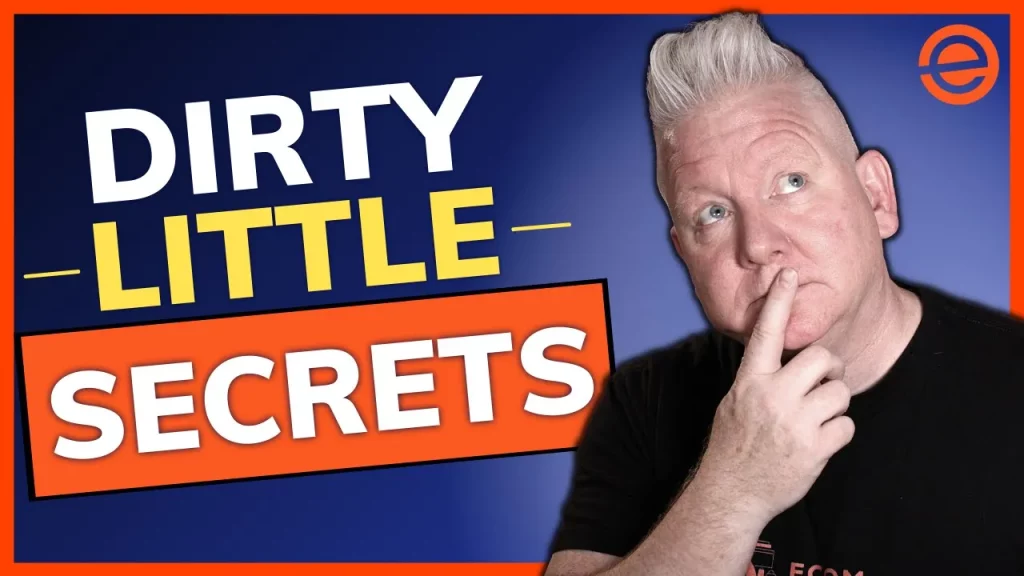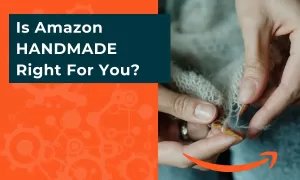Logos On Images Vs. Amazon’s Terms Of Service

Sean Farrington responds to a recent question about Amazon images…
Table of Contents
So, this week I had one of my Viewers reach out and ask me this question:
Hi Sean,
I am trying to sell on Amazon and was researching images with logos and came up with your video.
I had a question and was hoping you’d help me out. After watching your video I understand how important it is to differentiate my product from the main image by being creative. I want to set up an Amazon private label with my own brand registry and trying to comprehend the limits.
From your experience is it okay to put my logo on the product images barring the main image? I know Amazon says not to put logos or watermarks on images. What all can happen realistically if I put my logo on images?
What can happen realistically if I create a customer service image having my logo touting my excellent customer service in my effort to differentiate and increase conversion.
Thanks for your time.
Regards,
GB
I thought it was a great question, so I asked GB for permission to create a post and a video for you to answer that question.
About Amazon Images
First off all, when it comes to limitations on Amazon, we need to realize what Amazon wants, versus what they enforce vs. what they reward. Those are all very different things.
For, example. Amazon has stated for years that they want Amazon titles to be 50 characters in length. But, the reality is that the A10 algorithm rewards the longest titles, up to 200 characters.
So, when it comes to Images, the largest limitations are really placed on the Main Image.
According to Amazon TOS, your Main Images must be:
- Not Gratuitous: Amazon has a brand image to uphold. So, placing your product next to a model with nice abs, may not be in the best interest of Amazon’s family-friendly vibe.
- Not Confusing: Amazon’s terms of service state that they don’t want anything that may confuse the shopper. Meaning, if you’re selling Refrigerator Repair Kits then Amazon just wants to have the repair kit on the main image, and they might judge that having a model with nice abs holding the Repair Kit may be confusing to the customer.
So, they really want the simplest, most family-friendly, and least confusing main images possible.
But, here’s the rub. Staying simple can lead to uninspired main images that fail to get attention and stop the thumb scroll. That is the job of your main image. So, there is a dialectic tension between what
Amazon wants a more creative main image that simply gets more clicks.
That said, we have found it is becoming harder to have “Creative” images approved (even images that are within TOS). This means, you will probably have to work harder and come up with more options and test to see which ones work – both for Amazon censors and for getting better sales conversions!.
The Amazon Image Stack
Now regarding the Image Stack – Those are the images that are below the Main Image, meaning, not including the main image.
These too must not be gratuitous (again, they must be Family Friendly)
Beyond that, we pretty much do what we want
About placing logos on images.
We’ve never had issues with branding the image stacks – that is, placing logos on image stacks. Now, that does not mean this won’t change (as I say, Amazon is weird) but, we’ve never had problems.
In fact, at Ecom Optimization we brand (put the logo on) pretty much the whole image stack.
On the main image, you probably have your logo integrated with your design somehow, if not, you can photoshop the logo onto the product. Just make sure you do it in a way that looks real (what you’re going for is photo realism where it looks like the photo was directly from a camera. I have been hiring designers for years, and I can tell you, this is not a skill that most designers have. You may have to search for a while.
What Can Happen When Amazon Get’s Mad?
Next, I want to answer GB’s question, “ What all can happen realistically if I put my logo on images?”
So, obviously, GB is worried about punitive actions by Amazon. This should always be a concern when dealing with Amazon, because you are on their platform, and they make the rules.
But, let me say that the only issue that we’ve had when Amazon rejects images is that they suppress the listing.
This basically involves swapping out images and resubmitting (takes a few minutes, and no long-term penalties). Because of this, currently, we are creating Safe-Versions of our main images as fallbacks so we have images ready to go that we know we should not have any pushback from.
Also, as a note/bonus, sometimes using Splitly will let you get main images by the algorithm that would normally be suppressed by manual submissions.
Hope that helps. Until next time, I hope your sales are booming and your business is blessed. Talk with you soon!
Explore More Topics
- Amazon Attribution: Can This New Tool Help You Sell More on Amazon??
- Marketing Services Amazon: Is AMS really the Key to Your E-Commerce Success?
- ACoS Meaning: Should I Use It To Calculate and Optimize My Amazon Advertising?
- Amazon Listing Images: Can These 55 Image Design Hacks To Jumpstart Your Amazon Conversions?











